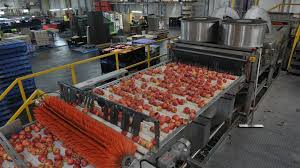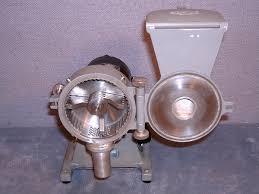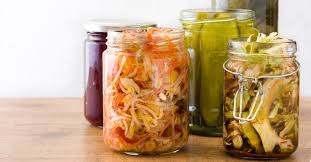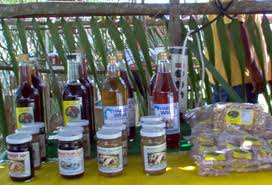Agro-processing techniques involve the transformation of raw agricultural products into value-added goods. This process enhances the shelf life of products, improves food security, and provides economic benefits to farmers and communities.
Agro-processing is the conversion of agricultural products into food and non-food products through various techniques and methods.
It plays a significant role in adding value to raw materials, enhancing their marketability, and improving the income of farmers. Agro-processing can involve a range of activities, from cleaning and grading to preservation and packaging.
Importance of Agro-Processing in Agriculture
Agro-processing holds immense significance in agriculture for several reasons:
1. Value Addition: Agro-processing increases the market value of raw agricultural products, enabling farmers to earn higher profits.
2. Job Creation: The agro-processing sector generates employment opportunities in rural areas, contributing to local economic development.
3. Food Security: By processing and preserving agricultural products, agro-processing helps reduce post-harvest losses, ensuring a stable food supply.
4. Nutritional Enhancement: Processing can improve the nutritional quality of food products, making them more beneficial for consumers.
5. Market Expansion: Agro-processed products can reach broader markets, both domestically and internationally, enhancing trade opportunities.
Secondary Processing Methods

Secondary processing refers to the transformation of primary agricultural products into finished goods. This stage includes various techniques to enhance the product’s value and quality. Key secondary processing methods include:
1. Canning: This method involves sealing food in airtight containers and heating them to kill bacteria and enzymes, extending shelf life.
2. Freezing: This technique preserves food by lowering its temperature to inhibit microbial growth, ensuring the product retains its quality.
3. Fermentation: Used in producing items like yogurt and pickles, fermentation involves the use of microorganisms to convert sugars into acids or alcohol, enhancing flavor and shelf life.
4. Milling: This process converts grains into flour or meal by grinding, which makes the products easier to use in cooking and baking.
Cleaning and Grading Techniques
Cleaning and grading are critical steps in agro-processing that ensure the quality of the final product. These techniques involve:
1. Cleaning: This process removes dirt, debris, and contaminants from raw agricultural products, ensuring they are safe for consumption. Common cleaning methods include washing, brushing, and air blowing.
2. Grading: Grading sorts products based on size, quality, and ripeness, ensuring uniformity and standardization. This process enhances marketability and pricing.
3. Sorting: After cleaning, products are sorted into different categories based on specific criteria, such as size and quality, which helps in pricing and packaging.
Drying and Dehydration Methods
Drying and dehydration are essential techniques in agro-processing that preserve food by removing moisture. Key methods include:
1. Sun Drying: This traditional method uses sunlight to remove moisture from products like fruits and vegetables. While cost-effective, it requires good weather conditions.
2. Air Drying: This method uses warm air to dry products, which can be done indoors or in controlled environments to ensure quality.
3. Hot Air Drying: This technique uses hot air in specialized equipment to remove moisture quickly and efficiently, preserving the product’s quality.
4. Freeze Drying: In this advanced method, products are frozen and then placed under a vacuum to remove moisture, maintaining flavor and nutritional value.
5. Dehydrators: Electric or solar dehydrators can be used to control temperature and airflow, providing consistent results and preserving quality.
Here’s a detailed overview of various methods involved in agro-processing, including milling, freezing, canning, fermentation, and extraction.
Read Also: The Common Flagellated Protozoans that Infest Fishes
Milling and Grinding Processes

Milling and grinding are essential processes in agro-processing that convert grains and other raw materials into flour, meal, or other usable forms. The steps involved are:
1. Milling: This process involves grinding grains to produce flour or meal. It can be performed using different methods, such as roller milling, stone milling, or hammer milling. Each method has its advantages and results in varying flour textures and qualities.
2. Grinding: Grinding is similar to milling but often refers to smaller-scale operations. It can be used to process various materials, including spices, herbs, and grains, into fine powders or pastes.
3. Sifting: After milling or grinding, products are sifted to separate finer particles from coarser ones. This process ensures uniformity and quality in the final product.
4. Packaging: The final milled or ground products are packaged in suitable materials to preserve their freshness and prevent contamination.
Freezing and Refrigeration Techniques
Freezing and refrigeration are crucial for preserving food products by slowing down the growth of bacteria and enzymes. Key methods include:
1. Freezing: This method involves lowering the temperature of food products to below 0°C (32°F). Freezing retains the nutritional quality, flavor, and texture of food while preventing spoilage.
2. Blast Freezing: A rapid freezing technique that exposes products to extremely cold air. This method helps maintain the quality and texture of food by preventing the formation of large ice crystals.
3. Refrigeration: Storing products at temperatures between 0°C and 4°C (32°F and 39°F) extends their shelf life. Refrigeration is commonly used for perishable items such as dairy, meat, and vegetables.
4. Vacuum Packing: This technique involves removing air from packaging before sealing it. Vacuum packing helps reduce oxidation and extends the shelf life of frozen and refrigerated products.
Canning and Bottling Methods
Canning and bottling are methods used to preserve food by sealing it in airtight containers. These processes include:
1. Canning: This involves placing food in jars or cans and heating them to destroy bacteria and enzymes. The sealed containers are then cooled to create a vacuum, preventing spoilage.
2. Hot Water Bath Canning: A method suitable for high-acid foods like fruits and pickles. The jars are submerged in boiling water for a specified time to kill bacteria.
3. Pressure Canning: Used for low-acid foods like vegetables and meats, this method involves sealing jars in a pressure cooker, allowing higher temperatures to kill harmful microorganisms.
4. Bottling: Similar to canning, bottling involves sealing beverages like juices, sauces, and syrups in bottles. This method may also include pasteurization to ensure safety.
Read Also: The Most Lucrative between Production of Fish Fingerlings or Raising them to Table Size
Fermentation in Agro-Processing

Fermentation is a biological process that converts sugars into acids, gases, or alcohol through the action of microorganisms. Key points include:
1. Definition: Fermentation is used in producing various food products, including yogurt, sauerkraut, and fermented beverages like beer and wine.
2. Microorganisms: Different microorganisms, such as bacteria and yeasts, are utilized in fermentation. Each type contributes to the unique flavor, texture, and preservation of the product.
3. Controlled Conditions: Successful fermentation requires careful control of temperature, pH, and time to ensure the desired outcome and prevent spoilage.
4. Health Benefits: Fermented products often have enhanced nutritional profiles and probiotic benefits, promoting gut health.
Extraction and Juicing Processes
Extraction and juicing are techniques used to obtain liquids from fruits, vegetables, and other raw materials. The processes include:
1. Extraction: This method involves separating valuable components from raw materials, such as oils from seeds or essential oils from herbs. Different techniques, like solvent extraction or cold pressing, can be used.
2. Juicing: Juicing involves crushing fruits and vegetables to extract their liquid content. This method retains the nutrients and flavors, making juices popular for consumption.
3. Filtration: After juicing, the liquid is often filtered to remove pulp and solids, resulting in a smoother product.
4. Pasteurization: To enhance shelf life, extracted juices may be pasteurized, which involves heating the juice to kill bacteria while retaining its flavor and nutrients.
Packaging and Preservation Techniques
Effective packaging and preservation are essential for maintaining the quality and safety of food products. Here’s a look at key techniques used in agro-processing:
1. Packaging: Packaging protects food from contamination, extends shelf life, and provides essential information to consumers.
2. Types of Packaging Materials: Different materials, such as glass, plastic, metal, and biodegradable options, are used based on the product type and shelf-life requirements.
3. Preservation Methods: Preservation methods include canning, freezing, drying, and vacuum sealing. Each method helps to inhibit microbial growth and prevent spoilage.
4. Active Packaging: This innovative approach incorporates substances that interact with food to improve safety and freshness, such as oxygen scavengers or antimicrobial agents.
5. Labeling: Proper labeling is essential for informing consumers about ingredients, nutritional information, and storage instructions.
Agro-Processing for Value Addition

Agro-processing plays a critical role in enhancing the economic value of agricultural products. Here’s how:
1. Transformation of Raw Materials: Agro-processing turns raw products into consumable goods, increasing their market value. For example, processing tomatoes into sauces or juices.
2. Job Creation: Agro-processing industries create jobs in rural areas, contributing to local economies and reducing unemployment.
3. Food Security: By processing food, communities can store surplus products, reducing food waste and ensuring availability during lean seasons.
4. Diversification: Farmers can diversify their income by processing various products, such as fruits into jams or dairy into cheese.
5. Export Opportunities: Processed goods often have higher export potential, boosting the agricultural sector’s contribution to national economies.
Role of Technology in Agro-Processing
Technology plays a vital role in enhancing the efficiency and quality of agro-processing. Here are some key points:
1. Automation: Automated machinery improves processing speed and reduces labor costs. Examples include automated sorting, packing, and labeling systems.
2. Quality Control Technology: Advanced technologies, such as spectrophotometry and chromatography, help ensure product quality by detecting impurities or inconsistencies.
3. Blockchain Technology: This ensures transparency and traceability in food supply chains, allowing consumers to know the source of their food.
4. IoT and Smart Sensors: These technologies monitor storage conditions (like temperature and humidity) to maintain product quality during processing and storage.
5. Research and Development: Technological advancements drive innovation in agro-processing, leading to the development of new products and improved processing techniques.
Quality Control and Safety in Agro-Processing
Ensuring quality and safety is crucial in agro-processing. Here’s how it is achieved:
1. Quality Assurance Programs: These programs establish standards and protocols to maintain product quality throughout processing.
2. HACCP (Hazard Analysis and Critical Control Points): This systematic approach identifies potential hazards in the production process and implements controls to mitigate risks.
3. Regular Inspections: Routine inspections and audits ensure compliance with safety regulations and standards, safeguarding consumer health.
4. Training for Workers: Providing training for employees on food safety practices helps minimize contamination risks during processing.
5. Consumer Education: Informing consumers about safe food handling and storage practices further enhances food safety.
Do you have any questions, suggestions, or contributions? If so, please feel free to use the comment box below to share your thoughts. We also encourage you to kindly share this information with others who might benefit from it. Since we can’t reach everyone at once, we truly appreciate your help in spreading the word. Thank you so much for your support and for sharing!
Read Also: Complete List of Anti-Inflammatory Foods you Should Know About
